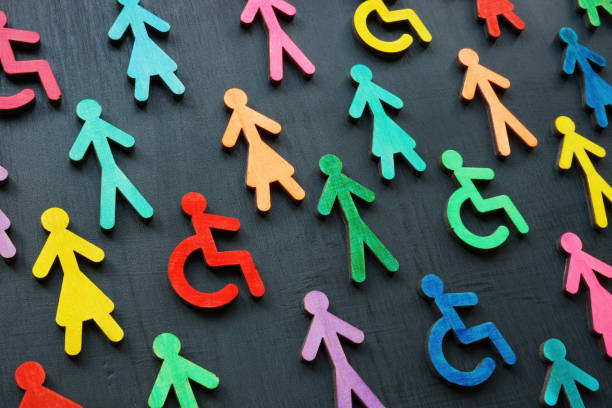

In today’s world, where progress in technology, infrastructure, and human rights continues to reshape societies, the issue of disability rights and accessibility remains critical. Disability rights are fundamentally about ensuring that individuals with disabilities are treated equally, can fully participate in society, and have access to opportunities, services, and spaces just like everyone else. While significant strides have been made, much work remains to ensure that accessibility is not just an option but a guarantee for all.
Understanding Disability Rights
Disability rights stem from the broader concept of human rights, emphasizing dignity, equality, and respect for all individuals, regardless of their physical, sensory, intellectual, or mental conditions. The history of the disability rights movement is rich, marked by significant milestones such as the passage of the Americans with Disabilities Act (ADA) in the U.S. in 1990, and the adoption of the United Nations Convention on the Rights of Persons with Disabilities (CRPD) in 2006. These frameworks, along with national and regional laws, have empowered millions of people living with disabilities by outlawing discrimination and ensuring their right to education, employment, and participation in public life.
However, disability rights extend beyond legislation. They also encompass societal attitudes and efforts to reduce stigma and misconceptions about disabilities. These rights advocate for a society that respects differences and promotes inclusion, so people with disabilities can lead fulfilling lives without facing unnecessary barriers.
The Need for Accessibility
Accessibility is an essential part of disability rights. It refers to the design of products, devices, services, or environments so that they can be used by all people, regardless of their abilities. True accessibility is not limited to physical spaces; it also includes access to information, communication technologies, public services, and cultural life.
Physical accessibility is often the most visible aspect. From wheelchair ramps to accessible public transportation and elevators in buildings, efforts have been made to accommodate individuals with physical disabilities. However, accessibility extends beyond just structural accommodations. The concept includes making websites navigable for people with visual impairments, offering sign language interpreters for the deaf or hard of hearing, and ensuring that public spaces are free from sensory overload for individuals with autism or sensory processing disorders.
The principles of universal design have increasingly guided modern architecture, technology, and policy to create spaces and products that can be accessed, understood, and used by as many people as possible. This approach benefits not only people with disabilities but also other groups, such as the elderly, parents with strollers, and people with temporary injuries. When accessibility becomes the norm, everyone benefits from a more inclusive society.
Barriers to Accessibility
Despite global progress, significant barriers to accessibility remain. Physical barriers in public spaces, workplaces, and homes continue to hinder people with disabilities. Poorly maintained sidewalks, buildings without elevators, or public transportation without accessible seating all contribute to the marginalization of disabled individuals.
Moreover, digital accessibility has become a growing concern in today’s technology-driven world. Websites, mobile applications, and digital tools that do not accommodate screen readers, voice commands, or alternative navigation methods exclude millions of people from the digital sphere. As society moves toward a greater reliance on technology, ensuring that these platforms are accessible to all is crucial for equitable participation.
Social barriers also persist. Misconceptions, stereotypes, and a lack of awareness often prevent individuals with disabilities from being treated with respect and equality. The stigma surrounding disabilities can result in exclusion from education, employment, and social activities, perpetuating cycles of poverty and inequality. Additionally, even when laws exist to support accessibility and rights, poor enforcement and a lack of understanding among policymakers and institutions can leave these protections ineffective.
The Role of Advocacy
Advocacy plays a central role in advancing disability rights and accessibility. Activists, organizations, and individuals have worked tirelessly to promote inclusive practices, raise awareness, and fight for the rights of people with disabilities. Organizations such as the World Institute on Disability (WID), Disabled Peoples’ International (DPI), and numerous local groups across the globe focus on promoting equal access to education, employment, healthcare, and public services.
One of the most effective tools for advocacy is education. By raising awareness about the challenges people with disabilities face, advocates can change societal attitudes and push for the enforcement of existing laws. This education can occur in schools, workplaces, and communities, encouraging a more inclusive mindset and fostering empathy and understanding.
Moving Toward a More Inclusive Future
The future of disability rights and accessibility depends on continued advocacy, innovation, and commitment to inclusion. Governments, businesses, and communities must continue to prioritize accessibility in all areas, from infrastructure to technology to policies that guarantee equal opportunities.
Technological advancements, for example, hold great promise. From AI-driven assistive technologies to autonomous vehicles, emerging tools have the potential to radically improve the quality of life for people with disabilities. However, for these innovations to be truly transformative, they must be designed with accessibility in mind from the outset.
Moreover, laws and policies must be enforced and updated to reflect the changing landscape of society. This includes not only ensuring compliance with accessibility standards but also revisiting outdated regulations to meet the needs of today’s world.
Conclusion
Disability rights and accessibility are not merely special considerations but essential components of a just and equitable society. Ensuring that people with disabilities can live without barriers, whether physical, digital, or social, benefits everyone by creating a more inclusive, diverse, and fair world. The journey toward full accessibility and equality is ongoing, but with continued effort and commitment, a more inclusive future is possible for all.
By viewing accessibility as a shared responsibility and prioritizing the rights and dignity of people with disabilities, societies can break down barriers and build a world that embraces diversity in all its forms.
